blog
Interview with photographer Jason Vaughn – Drifting with Purpose
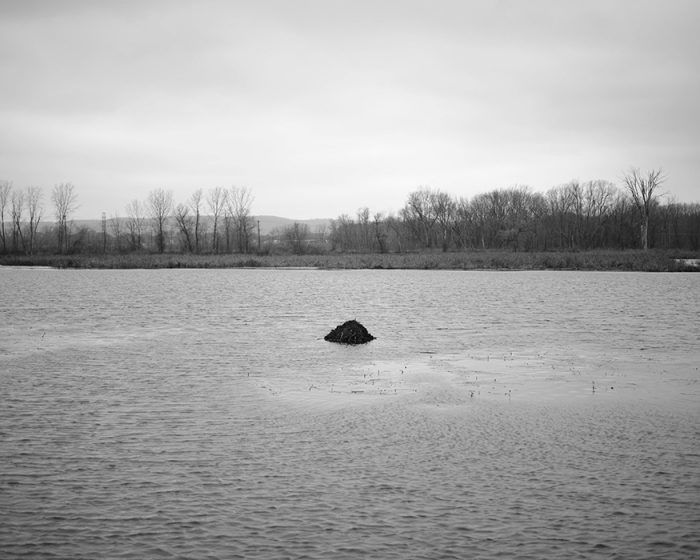
Jason Vaughn is a fine art documentary photographer based in Wisconsin who focuses on life in Middle America, showcasing everyday people and scenes in a way that is suggestive of reflection, community and the idea of permanence. In 2011, married and a father of a 3 month old son, he was diagnosed with leukemia at age 32. After cancer recovery, Vaughn refocused his in-progress work on the deer stands he saw in the fields of rural Wisconsin. The resulting project was critically well received, and Vaughn also published the series as a photo book.
“Hide is a project that began as a commentary on Wisconsin’s hunting tradition, using deer stands as a metaphor for the changing values of the sport. When my sudden cancer diagnosis interrupted the project, hide took on a much deeper, more personal meaning.
I was inspired on my drives through Wisconsin by deer stands, and began having conversations with hunters about the tradition of hunting in their families. Some people described building the stands as something permanent that could be passed to the next generation, especially sons who would inherit the land. I was anticipating the birth of my own son and thinking about my legacy to him, so this idea resonated strongly with me. I also heard hunters emphasize that their pastime is not about violence, but more about oneness with nature and time spent with their children in the stands. I wanted these photographs to capture the serenity of that sentiment, and to suggest the dignity that was associated with hunting when it was seen as a means of feeding large families. Finally, I wanted to look at the issue from a historical standpoint, and the impermanent nature of some of the stands illustrates the fading hunting tradition in Wisconsin, which has declined 6% since 2000.
When I was diagnosed with leukemia in 2011, my work on hide was put on hold. I was 32 years old and had a 3-month-old baby at home. Having to face mortality so unexpectedly made me come back to the project with a new perspective on the ideas of permanence and impermanence. Ultimately, hide became my reflection on legacies and family, my homage to the state that has become my home, and a narrative about accepting change.”
Given the coverage and attention given to hide and Vaughn in the past several years, I wanted to find out where he is headed with current work and where he finds himself now. Vaughn has continued to photograph his surrounding environment, and visually comment how the world around us is a reflection and reminder of life itself.
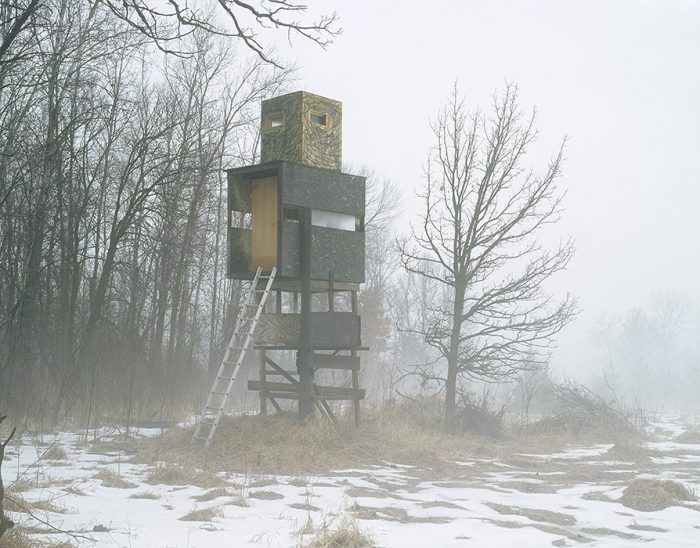
© Jason Vaughn
Q&A
Cary Benbow (CB): Like so many of the people I’ve interviewed, I always come to the core question of why do you photograph, or what compels you to make the images you create?
Jason Vaughn (JV): I initially fell in love with the darkroom when I was taking a photography class in Los Angeles. I was only taking the class because I needed to be a “college student” to keep a side job distributing records to students on campus. It seemed like the easiest class, so I took it. At the same time, the record label I was working for needed photos of live bands and I fell into that, shooting bands like Depeche Mode and Kanye West. Having that kind of access as I was first discovering the medium added to the excitement of it, but soon I decided I didn’t like shooting for money and wanted to use photography just as an art form. I befriended other photographers and started entering the LA art scene more so I was seeing all the paths you could take as an artist. It was fun but confusing. I went on my first road trip with my wife around 2009 to Wisconsin, and really figured out what I wanted to concentrate on as a photographer.
CB: Why did you decide to move and live in Wisconsin?
JV: I’m from California, and lived there most of my life. I met my wife in 2002 in Los Angeles when she was playing in bands and I was working for a record label. We wanted to start a family and decided to move to Wisconsin, where my wife was born and raised, in 2011. I had never even visited the midwest prior to meeting my wife. But I loved the winter, the pace of life, the warmness of the people…I basically fell in love with it and never looked back.
CB: What do you feel makes a good photograph?
JV: My thoughts on this have changed over the years, as I’ve grown as an artist and also just gotten older. These days, I respect when a photographer shows a natural ability to be sensitive to the subject. The people I follow now make it look effortless. They have perfected their craft enough that nothing looks forced. I can’t really point to one aspect, but an overall competency and ease that reflects mastery.
CB: What or who are your photography inspirations?
JV: Currently it is Raymond Meeks, Bernhard Fuchs, Roe Ethridge, and Mark Ruwedel, among others. I admire how Raymond Meeks approaches his books and interacts with the people who collect them. He has a great personal touch that I would like to emulate in my own personal interactions with collectors. He creates a sincere connection, and so people want to continue supporting his art. He seems to be able to do all of these things on top of being a father, which is a hard balance.
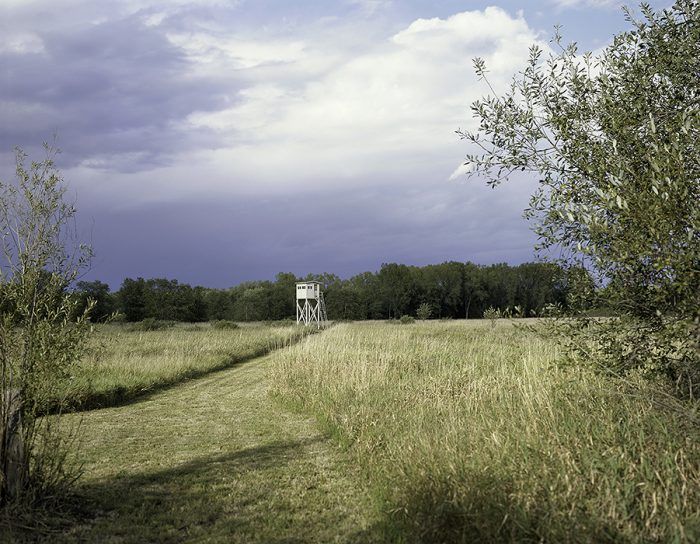
© Jason Vaughn
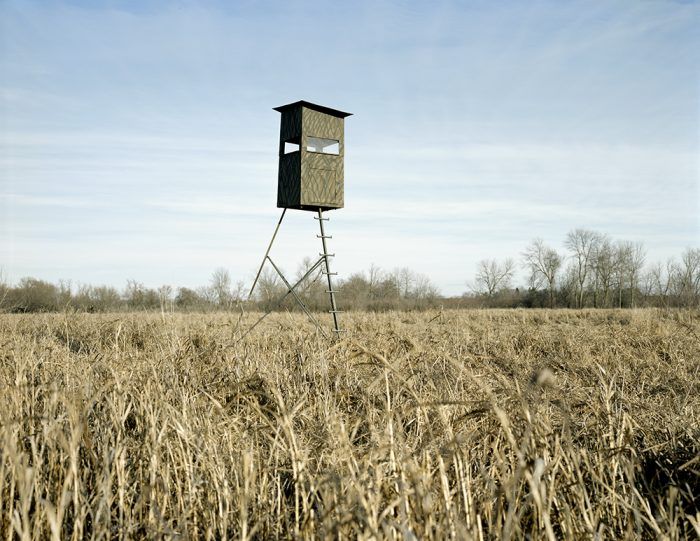
© Jason Vaughn
CB: Your work is specific to a certain place or region of the U.S. — is it more about your experience, or do you feel it translates well to other people’s experiences or lives? Do you feel your work makes a comment on a universal level, as well as the personal level?
JV: My last book, hide, was about deer stands in Wisconsin so it would seem to be very specific. But I think what resonated with people across the country and even outside of the US were the themes that translate on a larger level. Thinking about permanence, family, and the legacy you leave behind are just part of the human condition, no matter where you are geographically. I’m wrapping up another project called “Driftless” based on a little Wisconsin town called La Crosse. Again, it’s very localized but I believe people can experience it on a personal level because the theme of feeling stagnant versus being in transition is so universal.
CB: There are elements of nature, wildlife, landscape, man’s inclusion/interaction with nature in your work – can you comment on why you choose to depict these elements in the way you do?
JV: Ironically, I was never very interested in photographing nature until I started visiting the Midwest. I still don’t photograph untouched nature very much – rather, I like to photograph the ways that people have manipulated nature to serve the individual. In my new project Driftless one of the themes is how people become entangled in their environment, by altering the environment to suit themselves, and thereby becoming more and more entrenched and stationary. There is an interplay between nature and man that I think is far more interesting than just nature alone.
CB: What drew you to start a project about the deer stands originally? Were you thinking in terms of structures as form or architecture, or more about how people use them? Or something else entirely?
JV: It was a gradual development. I started out purely interested in the deer stands as structural forms. That was before I even knew what they were used for. I was photographing them because I thought they were beautiful and minimal, and it was kind of a treasure hunt as I traveled through Wisconsin, spotting them randomly from the highway. Once I learned about the hunting aspect and learned more about the culture of people who used them, I was drawn to that as well.
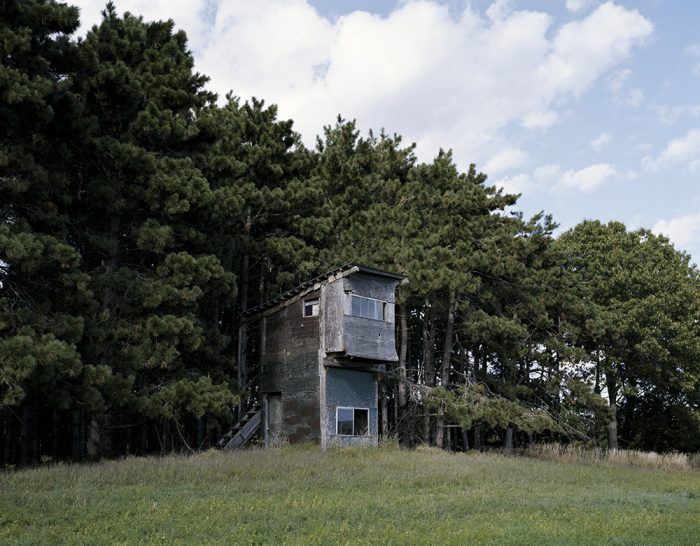
© Jason Vaughn
CB: Please talk about your decision to publish Hide, and the special addition as well. Why did you decide to do the special addition and work with TBW Books?
JV: I never officially studied photography in school (besides taking the darkroom class I mentioned before) and learned most of what I know about photography through books. So for me, the ideal end result of a project was a photo book. Hide had gained traction through the web and I was contacted by some publishers interested in printing the series. Trema Forlag was one publisher from Sweden that contacted me, and I liked the design aesthetic of Dennis and his minimal approach. We talked back and forth and it was a good fit. I was a fan of TBW Books and had been in contact with Paul because of that. Through emails he had mentioned seeing my work and we decided to meet up in Madison. I had been playing around with the idea of a deer stand-inspired wooden box and he took the idea and ran with it. He offered to put together a cool special edition box for the project and to release it through TBW. I was stoked.
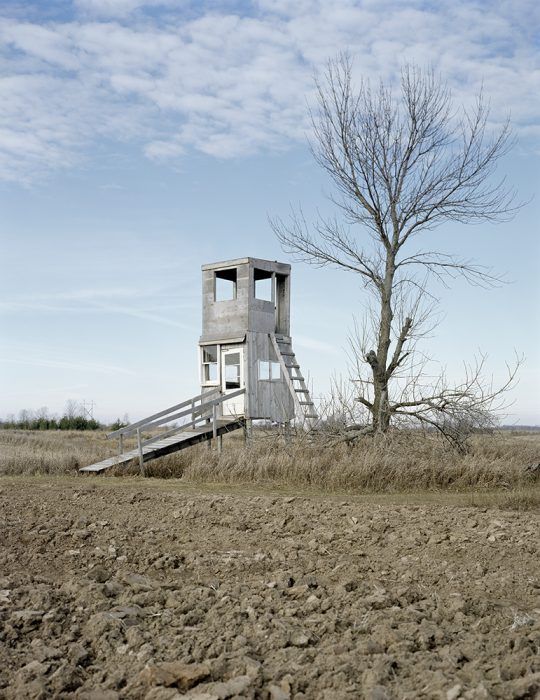
© Jason Vaughn
CB: Is it relatively easy, or do you find it a struggle to be an artist in the Midwest? Do you feel isolated in the larger artistic community or not?
JV: Overall, I feel lucky to be an artist in the Midwest. There are definitely some struggles. You don’t have the daily interactions or ease of access to major gallerists and collectors. But at the same time, I don’t believe those are necessary to be a successful artist. There are many benefits to being located in the Midwest. For me, I have easier access to the subjects I want to photograph. The artistic community here offers a different perspective, and depending on what part of the Midwest you live in, there is more government support of the arts – though not as much in Wisconsin. I find it easy to engage with the larger artistic community, online or by traveling to larger cities, but I get to enjoy the quality of life here.
CB: Of the photographer’s who you think of as influences on your own work – If these photographers have qualities that you admire/desire — how does that ‘inform’ your own creative process?
JV: Rather than one person or several people informing my process, I’m actually more influenced by the spectrum of work I am exposed to. Seeing how contemporary artists choose subject matter, sequence their books, explain their themes, construct a narrative – it’s remarkable how many variations a successful project can have. I like to look at the classics and compare them to contemporary books as well, to see the differences there. I’ve invested quite a bit of time and attention into my book collection, and I use it to inform my process regularly.
CB: What new work do you have currently? Please tell me more about your Driftless project.
JV: My family and I had to live in La Crosse, WI for one year, which is a small town right on the Mississippi River. We moved when my wife was expecting our second child, and so I was wrestling with these feelings of wanting to settle down but still being in transition. Knowing that I was going to have only one year there, I wanted to capture my own process of drifting, becoming lodged somewhere, and breaking free. At the same time, we were living right on the Mississippi River and I found out the area was called “the Driftless Region” so the whole thing came together.
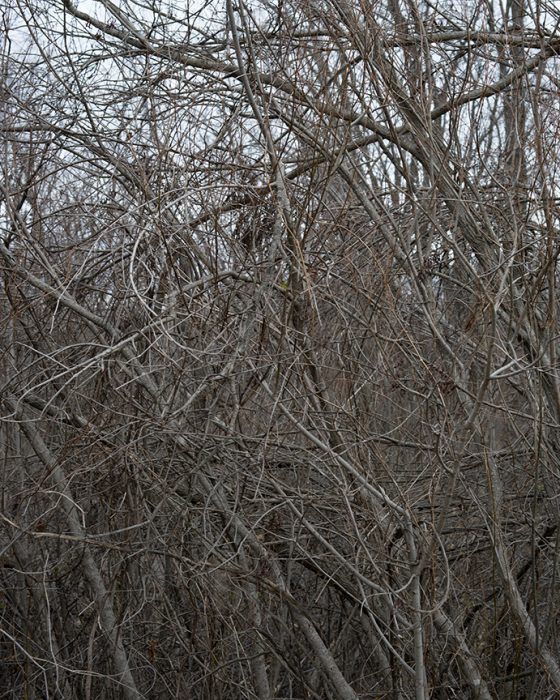
© Jason Vaughn
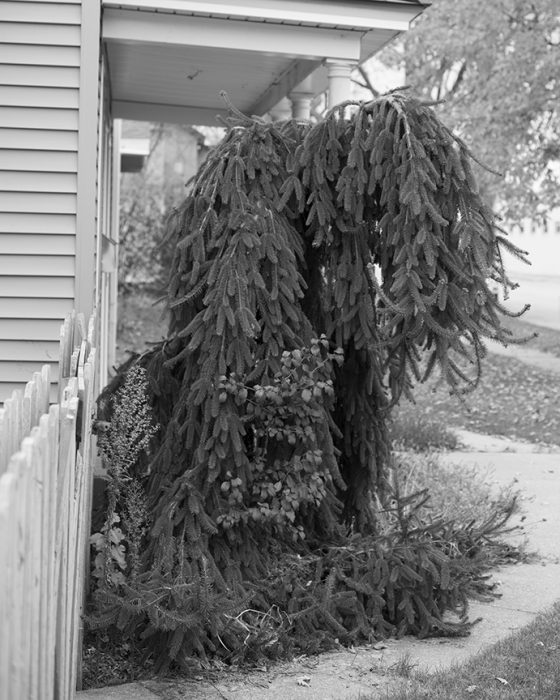
© Jason Vaughn
CB: In addition to the galleries of photo projects on your website, you have some other work highlighted. What is the background behind some of them listed on your site: like Cabin Porn, I wish you would believe me, etc.
JV: Cabin Porn is a website that features rustic structures, like the deer stands, and they put out a collection of photographs from the website. Hinterland is similar, but from a German publisher, and focused on architecture and typography. I Wish U Could Believe Me was a zine put out by Clint Woodside’s The Deadbeat Club. He had seem my work through TBW and wanted to do something together. So I gathered some older road trip images and collaborated with the amazing Brad Zellar on the text. The Deadbeat Club has a great following and works with several photographers I admire. It’s been fun seeing the zine make the rounds at the art book fairs and get into places I’ve never worked with before.
CB: Please talk about the role of a photographer as “publisher” and what you think about the recent increased push for photographers to publish photo books.
JV: Photo books still hold the same excitement to me as when I first started collecting them. It is hard when the market is flooded with them, but if only the major companies were releasing books, I wouldn’t have been able to publish anyting. I can see the benefits of publishing a photo book completely independently, and also of working with an established publisher. I love sequencing and being in charge of what happens to my books. But a few items i put out through other people were put in hands I could never reach. So I think both have their benefits.
CB: In an article in Lenscratch, you mentioned that the hide project became a narrative about accepting change. Has your approach to making photos changed in the years since your cancer diagnosis, recovery, and fatherhood?
JV: A lot of change happened in 2011. I relocated to the midwest, my wife started medical school (which basically means I never saw her), I had my first child and was diagnosed with a bunch of crazy medical problems, all within the span of 4 months. It was unbelievable and a lot to handle, not only physically but mentally. I wasn’t really given the choice whether to accept some of these changes. And some of the effects have lasted to this day. For example, when I was going through chemotherapy the doctors told me I couldn’t hold my infant son, for months, and it was heartbreaking. Even though I’m doing fine now, that still affects my interaction with him. I find myself trying to compensate for it. Those type of circumstances changed me more as a person than anything. I think it adds a different level of sensitivity to the work I’m creating. It gave me a lot of perspective as a photographer.
CB: Has the birth of your second child, your daughter, lead to anything new in the way you approach your work or life?
JV: Yes, I’m having to put more effort into balancing my work and life. Most of my time right now is spent being a father. It was my decision to put my family first, and I know I’ll never regret that. The time I’m spending with my daughter is especially precious to me because she’s the same age my son was when I was too sick to take care of him. So some of the experiences of having a baby are new to me even though she’s my second child. To be honest, I don’t get to photograph as much as I would like as a result of being a father. I don’t carry around a camera with me 24/7. I take walks with my daughter and will shoot but I try as much as I can to give her dedicated time. I did use her as a diversion when shooting people in La Crosse. People are often a little wary of me asking to take pictures of them or their property…but with my daughter in a Baby Bjorn nobody is threatened by me whatsoever.

© Jason Vaughn

© Jason Vaughn
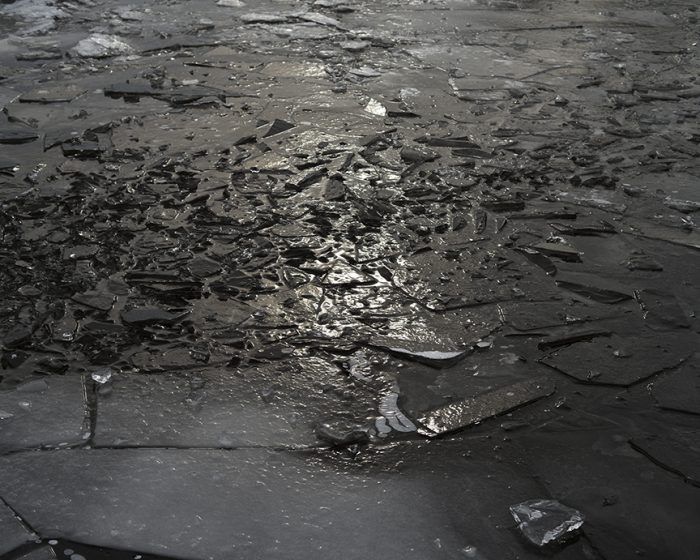
© Jason Vaughn
CB: There is something about the Mississippi River – so much history, influence, and its symbolism in American culture. River towns are set apart that way. There is a different attitude toward one’s sense of place when ‘Home’ is in relation to a significant aspect of the physical landscape like a river or ocean. Does the Driftless project tap into any of those muses?
JV: Definitely. Years ago I did a photography road trip that brought me to my dad’s hometown, Portsmouth OH, which is on the Ohio river. He kind of moved away and never looked back when he was 17 so I have lots of family there that I wasn’t in touch with. We spent 4th of July on the river, and it’s hard not to be inspired by the symbolism of a river – cleansing, renewal, movement, separation, evolution. Portsmouth is the tri-state area and the town grew as a function of the river, but due to economics it’s now a dying town so it was interesting to go back and see how the symbolism of the river has changed. La Crosse is on the Mississippi and like you said the history and influence are profound. In the Driftless series, one of the main themes is how people drift, become entangled somewhere often by pure coincidence, and occasionally but not always break free. The debris and ice floating on the river were a very pertinent visual representation of that for me while I was there. Many of the pictures from the project show these floating elements, or suggest the activity and constant change happening on the river. I was so fortunate to be there, because it is a very inspiring muse.
Location: Online Type: Featured Photographer, Interview
Events by Location
Post Categories
Tags
- Abstract
- Alternative process
- Architecture
- Artist Talk
- artistic residency
- Biennial
- Black and White
- Book Fair
- Car culture
- Charity
- Childhood
- Children
- Cities
- Collaboration
- Community
- Cyanotype
- Documentary
- Environment
- Event
- Exhibition
- Faith
- Family
- Fashion
- Festival
- Film Review
- Food
- Friendship
- FStop20th
- Gender
- Gun Culture
- Habitat
- Hom
- home
- journal
- Landscapes
- Lecture
- Love
- Masculinity
- Mental Health
- Migration
- Museums
- Music
- Nature
- Night
- nuclear
- p
- photographic residency
- Photomontage
- Plants
- Podcast
- Portraits
- Prairies
- Religion
- River
- Still Life
- Street Photography
- Tourism
- UFO
- Water
- Zine

Leave a Reply